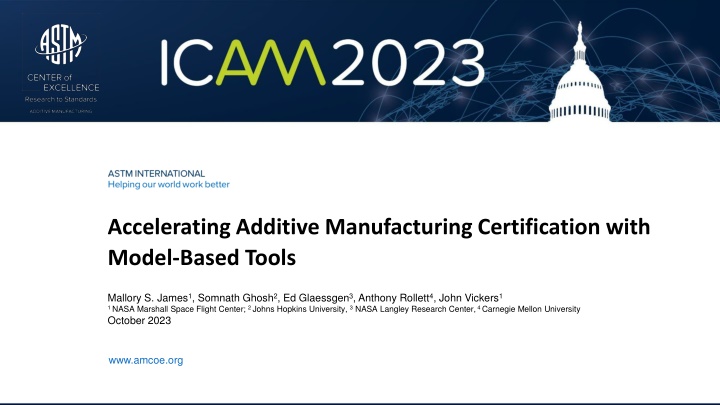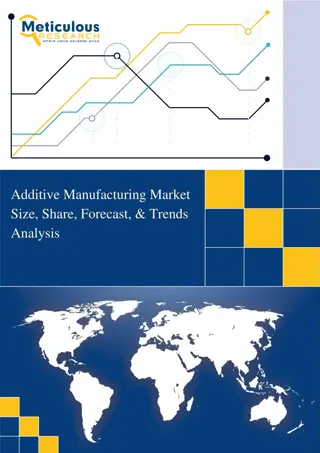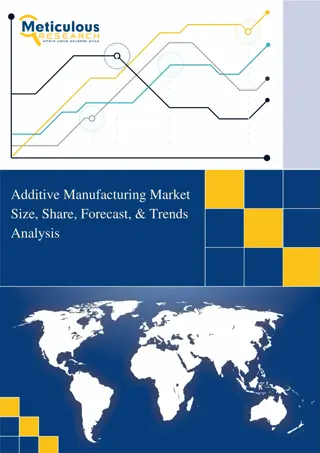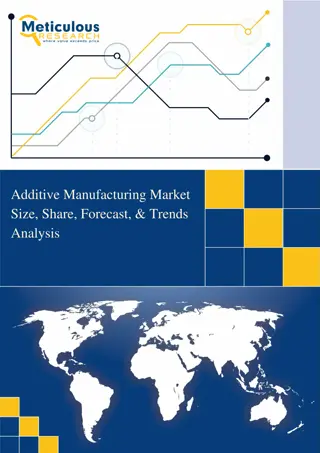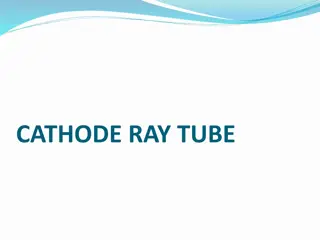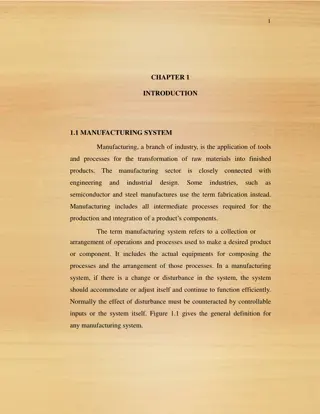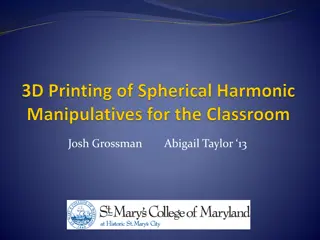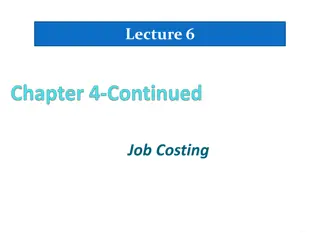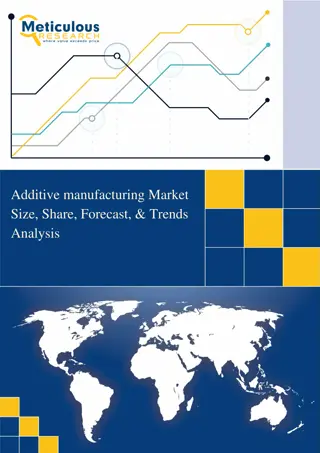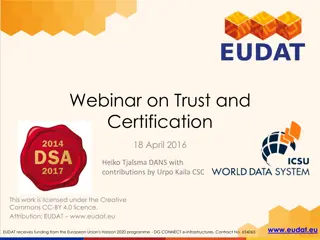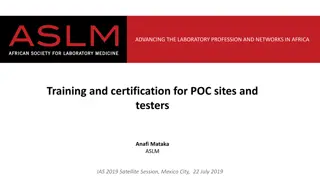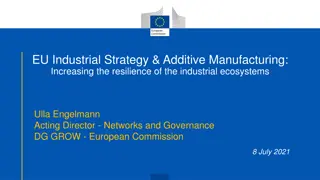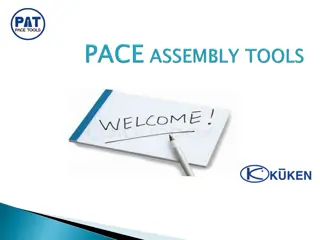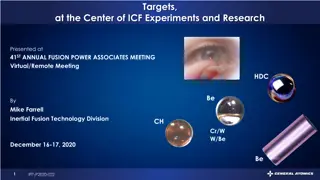Accelerating Additive Manufacturing Certification with Model-Based Tools
Mallory S. James, an Engineer at NASA Marshall Space Flight Center, explores qualification methodologies for AM spaceflight hardware. She focuses on model-based tools for accelerated AM certification and continuous process improvement. The IMQCAM Institute aims to innovate a model-centric workflow bridging gaps for efficient part certification by metals additive manufacturing.
Download Presentation

Please find below an Image/Link to download the presentation.
The content on the website is provided AS IS for your information and personal use only. It may not be sold, licensed, or shared on other websites without obtaining consent from the author.If you encounter any issues during the download, it is possible that the publisher has removed the file from their server.
You are allowed to download the files provided on this website for personal or commercial use, subject to the condition that they are used lawfully. All files are the property of their respective owners.
The content on the website is provided AS IS for your information and personal use only. It may not be sold, licensed, or shared on other websites without obtaining consent from the author.
E N D
Presentation Transcript
Accelerating Additive Manufacturing Certification with Model-Based Tools Mallory S. James1, Somnath Ghosh2, Ed Glaessgen3, Anthony Rollett4, John Vickers1 1 NASA Marshall Space Flight Center; 2 Johns Hopkins University, 3 NASA Langley Research Center, 4 Carnegie Mellon University October 2023 www.amcoe.org
Mallory S. James Mallory James is an Engineer at NASA Marshall Space Flight Center in Huntsville, Alabama. Currently on a developmental assignment to the Office of the Center Director, Mallory s home role is supporting qualification and certification methodologies for AM spaceflight hardware. Her professional interests specifically include qualification considerations for multi-laser powder bed fusion systems and closed-loop adaptive AM processes, model-based tools for accelerated AM certification, and continuous process improvement in the MSFC AM Lab. Prior to joining NASA in summer 2021, she worked for the Department of Defense from 2010-2021 in various production and systems engineering roles at both Redstone Arsenal and Patuxent River Naval Air Station. She has a B.S. in Industrial and Systems Engineering from Auburn University and a M.S. in Human Factors in Aeronautics from Florida Tech. ASTM International Conference on Advanced Manufacturing
Accelerating Additive Manufacturing Certification with Model-Based Tools Institute Introduction Motivation for the Institute NASA Additive Manufacturing Overview IMQCAM Overview and Research Areas Impact of the Institute
IMQCAM Institute for Model-based Qualification & Certification of Additive Manufacturing NASA Space Technology Research Institute Co-Directors: A.D. (Tony) Rollett (CMU), PI & Somnath Ghosh (JHU) Core Team: Sankaran Mahadevan, Caglar Oskay, Pranav M Karve (Vanderbilt); Jamie Guest, Jaafar El-Awady, Dave Elbert, Maggie Eminizer (JHU); Li Ma, Michael Presley, Steven Storck (JHU-APL), Harry Millwater (UTSA), Tao Sun (NWU), John Lewandowski (CWRU); Mohadeseh Mousavi-Taheri, Sneha Narra, Bryan Webler (CMU); David Furrer (P&W); Craig McClung (SwRI) Other Partners: Lockheed Martin, Hexagon, NIST, NRL, ARL, Raytheon Central goal: Innovate a model-centric workflow that closes the critical gaps between current capabilities and what is necessary for efficient qualification and certification of parts by metals additive manufacturing , meeting NASA standards.
Motivation for the Institute A new transformation of advanced AM technologies to build spaceflight hardware for NASA s exploration missions is upon us. This wave is enabled by dramatic changes in design and manufacturing paradigm brought about by AM. However, many of the inherent benefits of digitally oriented AM are being negated by the cost and schedule of today s all empirical development and certification cycles. [1] The more we understand about the relationship between the central AM process, the material it produces and the way that the material performs, the better we can model it. In this way, ICME is a powerful tool to apply this process-structure- properties understanding to advance certification by analysis paradigms. Credit: [2] This effort will leverage digital twin technology to significantly decrease the resources needed in the current certification cycles further unlocking the value of AM. [1] Vickers, J., AIAA Complex Aerospace Systems Exchange (CASE) Digital Twin Certification for Additive Manufacturing Discussion Paper [2] NIST, https://www.nist.gov/el/lpbf-thermography
National Aeronautics and Space Administration
Additive Manufacturing at NASA Additive Manufacturing is heavily leveraged on human-rated flight projects: How do we trust and certify these parts?
Todays Certification Approach Current approaches for certification rely heavily on trial from numerous combinations of parameters are evaluated experimentally. Iteration may occur on a particular part build numerous times to dial-in the recipe. Endless variations arise due to the sensitive nature of the metallurgical process and individual aspects of AM machines. Once qualified, the AM process is not extensible AM process is not extensible, limiting the ability to make design or manufacturing changes. Example Laser Powder Bed Fusion Process trial- -and and- -error error where the outcomes Iteration required on Steps 2-6 to Mature/Qualify Part and Processes
AM technology is demonstrating incredible benefits in wide-spread applications, design flexibility, affordability, schedule, performance, sustainability, and production on demand. Certification is the #1 challenge: complexity, unknowns, and delays are severely negating the benefits. Certification of remotely produced products is an unresolved technology gap.
Why Modeling Matters Advancement of computational tools for certification enables a transition from Design-Build-Test paradigm to Design-Model-Build Design Design Build Model Test Ref: Kevin Wheeler / NASA Ames Build Credit: NIST Coupon-level material characterization work in a digital space enables component design, analysis, and certification faster and more affordably with fewer build iterations Credit: iron-foundry.com
Institute Overview What s an STRI? Research Areas Long-term sustained investment in research and technology critical to NASA s future. Highlights include: Empowered university-led team Specific research objectives with credible expected outcomes in 5 years Talented, diverse, cross-disciplinary and fully integrated team Low to mid TRL Award Details Expected duration: 5 years Award amount up to $3M per year Institutes expected (and empowered) to implement their own review internal processes NASA oversight annual reviews and brief quarterly status reports 1. A furthered understanding of materials-processes- structure-property relationships for AM through advanced computational toolsets coupled with innovative experiments, laying the foundation for accelerated product certification. Development of uncertainty-quantified, physics- based models and simulations to understand the factors that can affect the formation, distribution, and the effects of process-induced defects and to address other principal sources of variability. Integration and application of methodology, software tools, artificial intelligence (AI), machine learning (ML), and/or databases, etc., based on computational and experimental tools to a model- centric certification approach. 2. 3.
IMQCAM Goals Develop a digital twin of metals additive manufacturing that comprises an integrated set of verified, experimentally-validated, uncertainty-quantified computational models and simulation & design tools that will mirror the entire materials-processes-structure- property performance and life linkage in metal AM Demonstrated for at least two materials, Ti-6Al-4V and In718 Evaluated by multiple companies against their own data, i.e., third- party validation Adoption of IMQCAM models by partner OEMs
Task I: Processing, Testing, Modeling, Simulation and Design Module I: Physical Module IB Module IC Asset AM Processing, Fabrication, Design Microstructure & Defect Characterization Component Testing Module IA Uncertainty Quantification, Verification & Validation Data Pipeline Module IIB Module IIB Module IIC Module II: Digital Twin Multiscale Models Fatigue (PUCM); Component- Microstructure Design Process Models (Detailed & Rough Order) Micromechanical Characterization & Modeling Module IIA
Task II: Qualification, Certification, and Translation Task I: Task I: Processing, Testing, Modeling, Simulation and Design Module I Data Coordination & Dissemination Software Coordination & Dissemination NASA Centers Software Coordination Module II Module III Qualification/Certification Translation Industry/OEMs Using Experimental & Simulation Data
Traditional Experimental AM New Computational AM Certification Impact of the Institute Certification STRI Cost savings from model- based tools Material Characterization Witness Testing Approach Establish Process Control Factors Post-processing Requirements NDE Techniques Modeled Sources of Variability Effects of Defects and Surface Roughness Design Materials for their Intended Usage Dependence of Performance on Processing Build Failure Prediction Stress and Heat Simulation AI/ML Tools for Process Control Computational Materials Enables Extensibility
